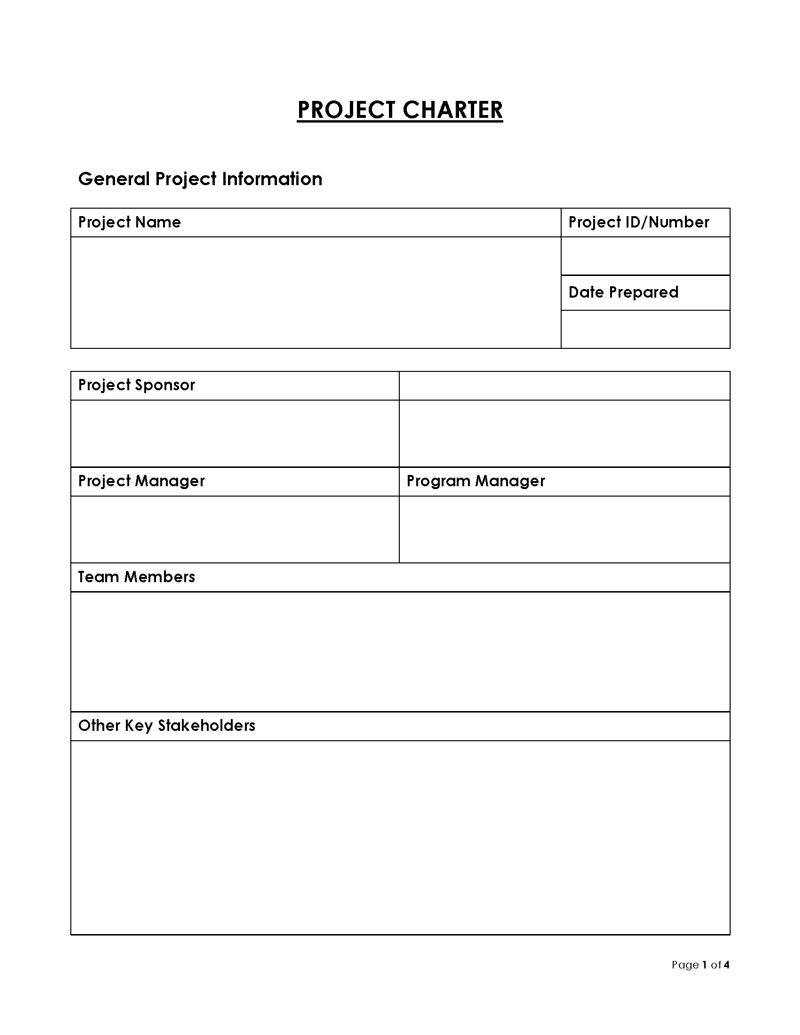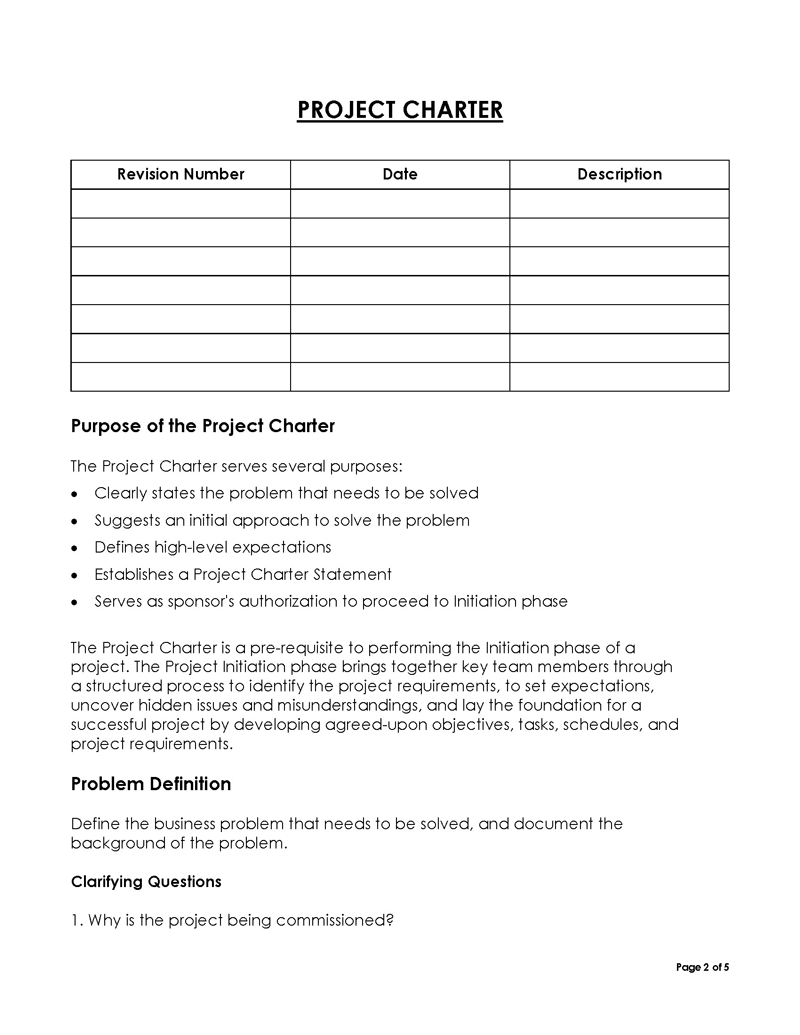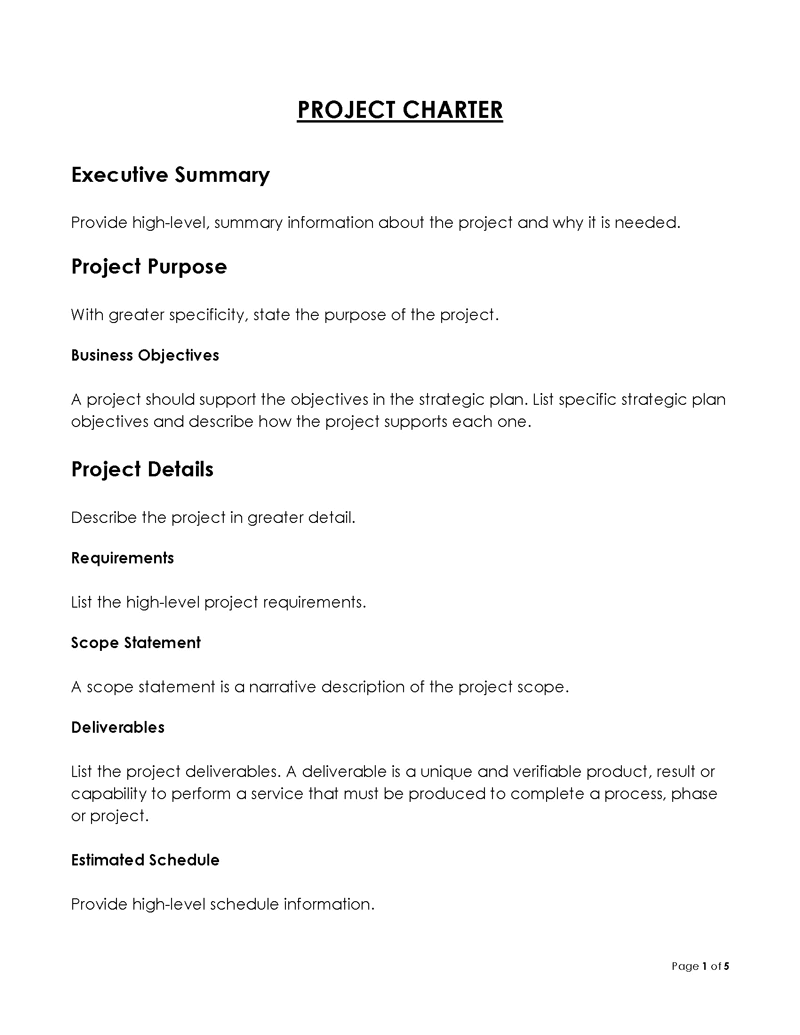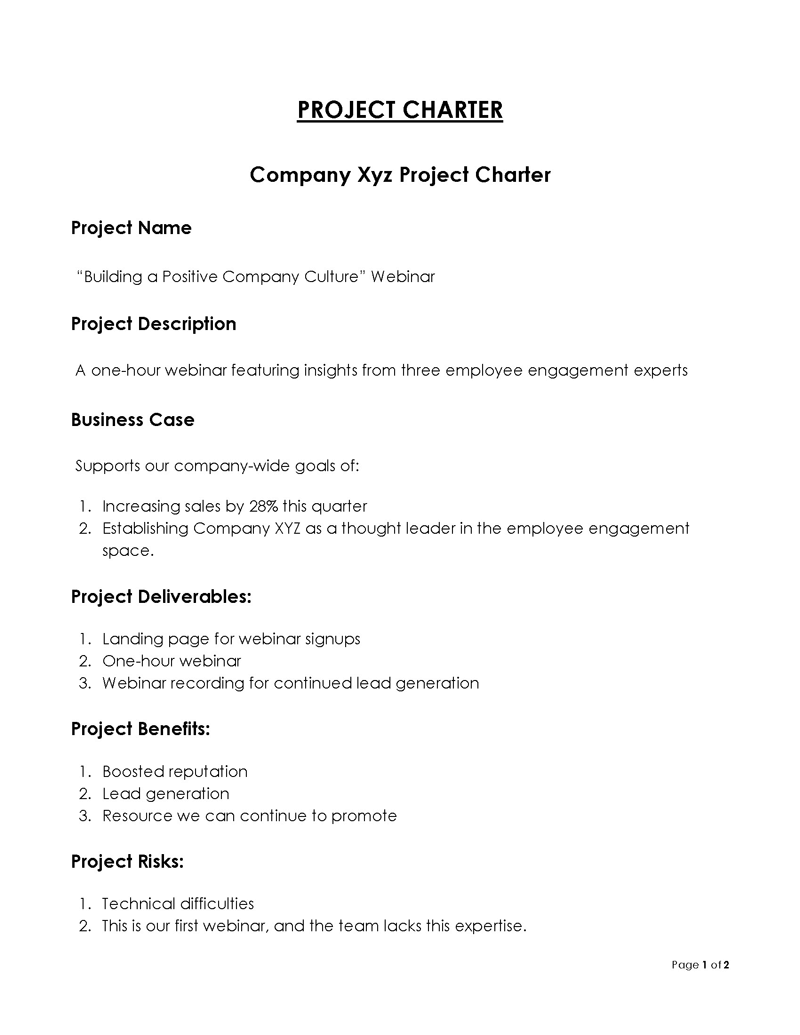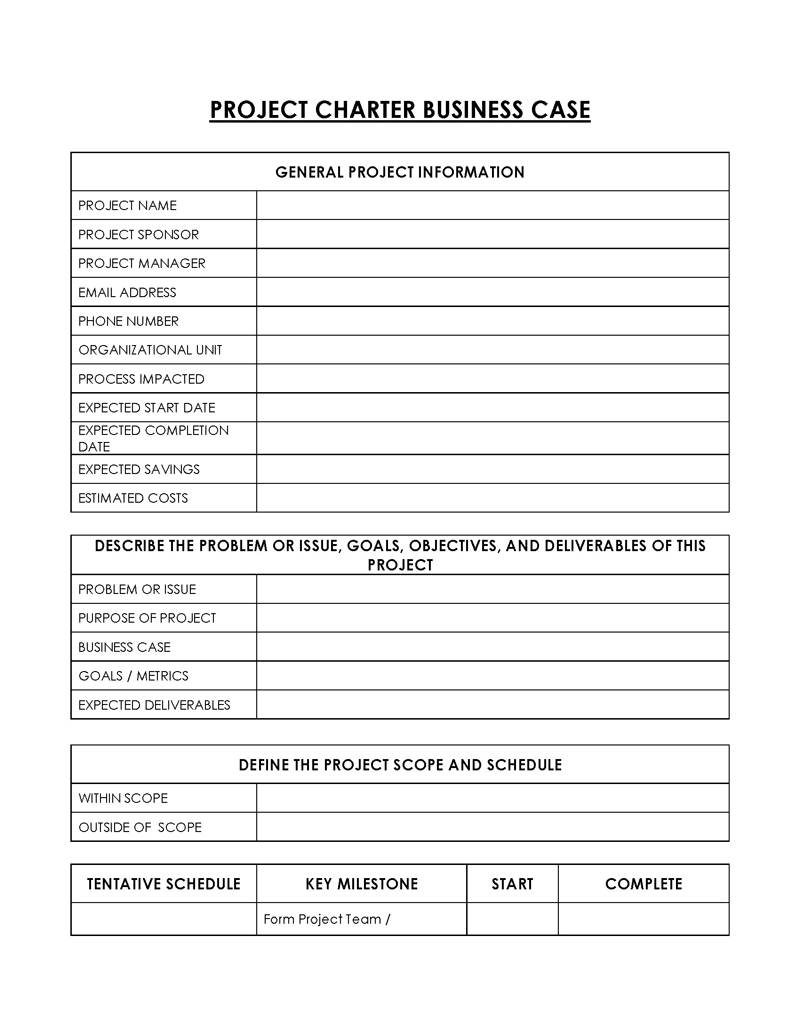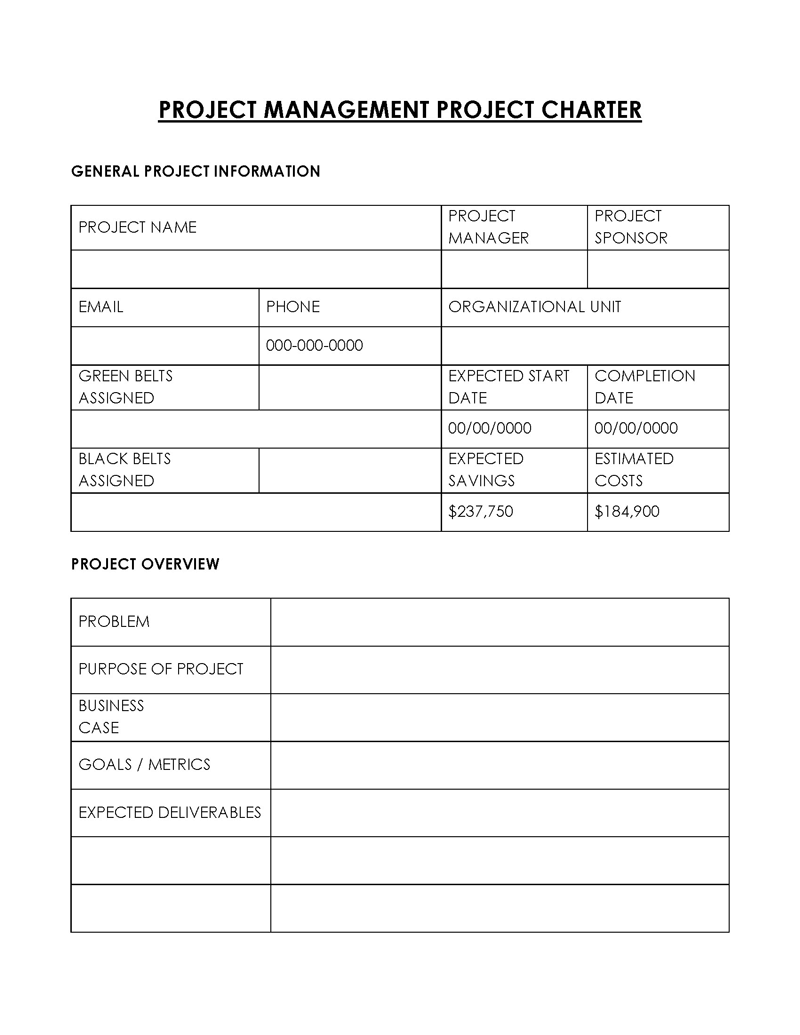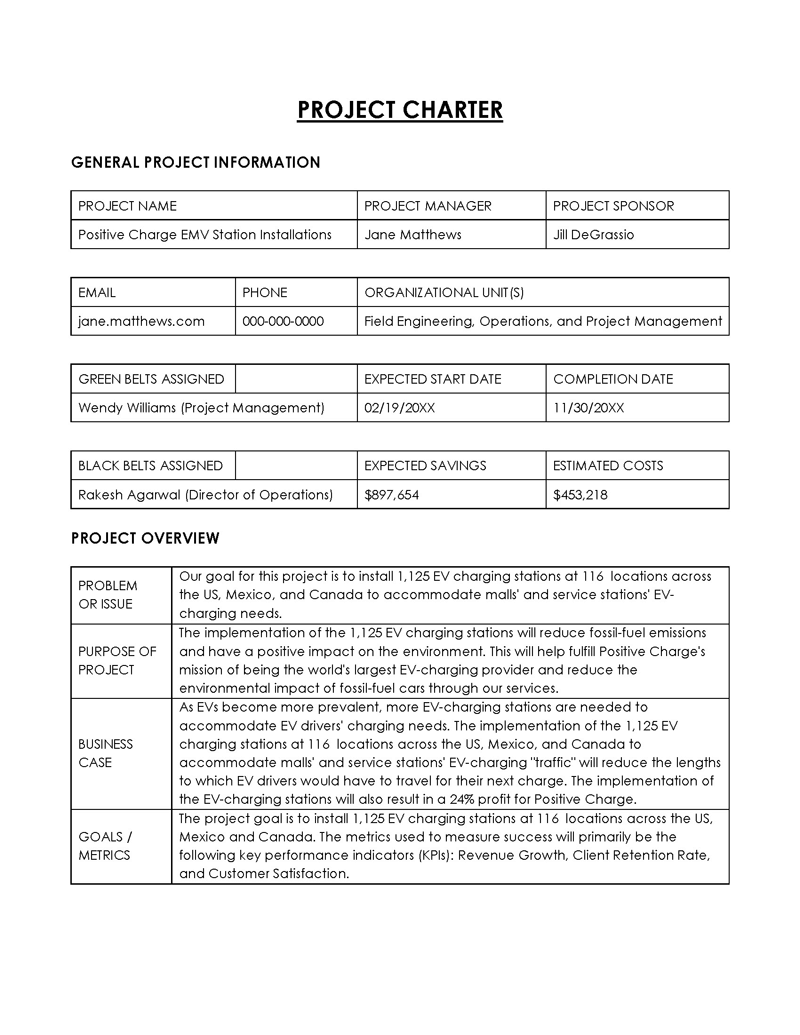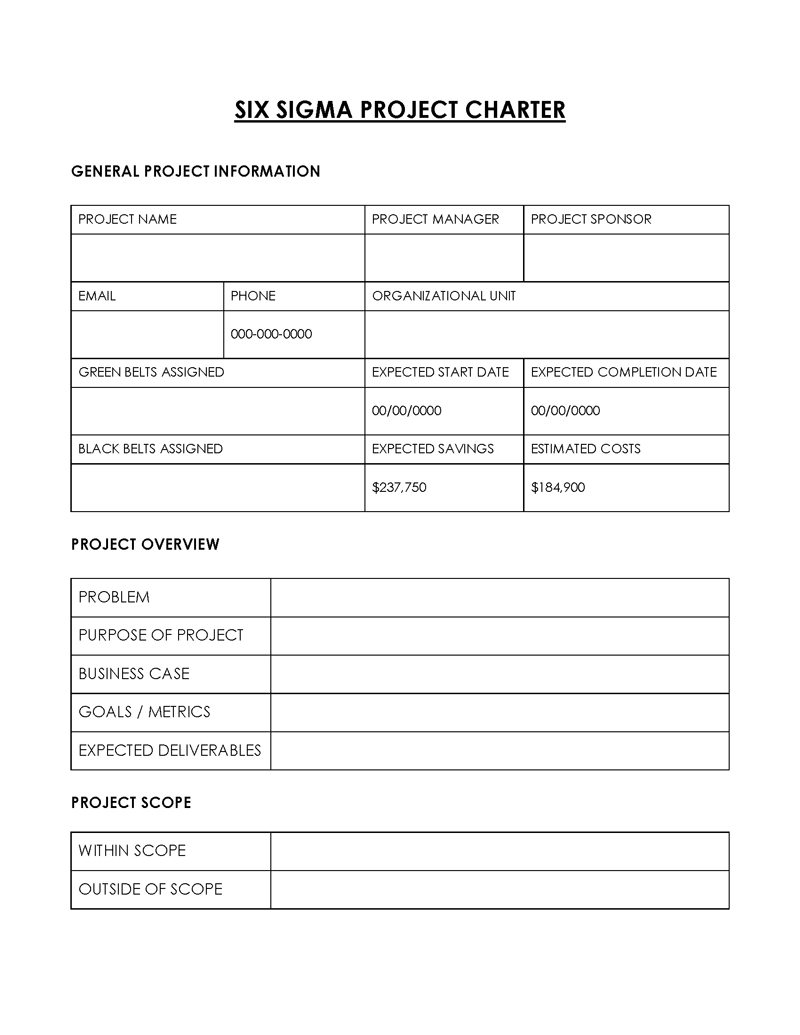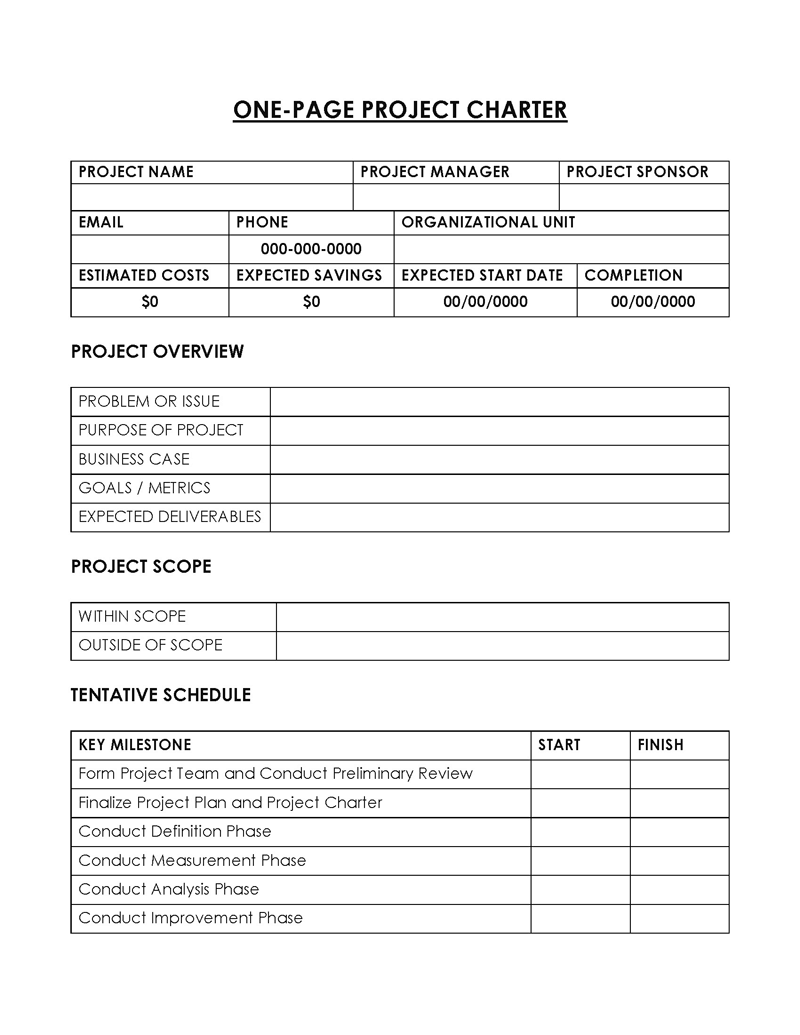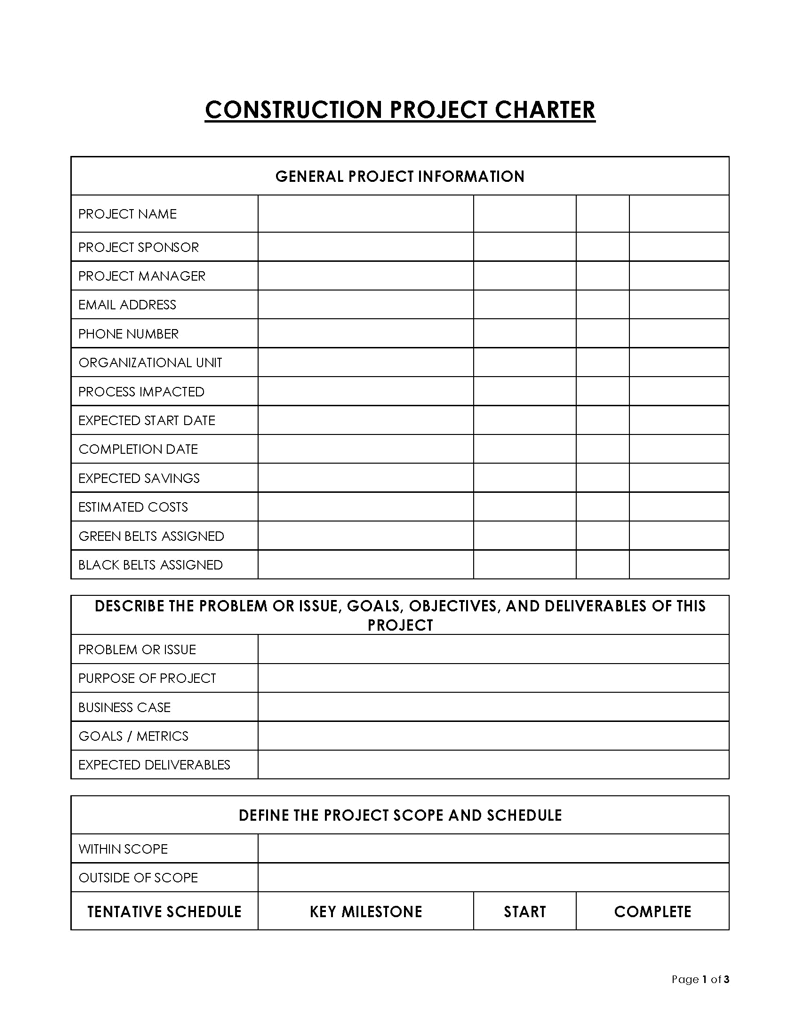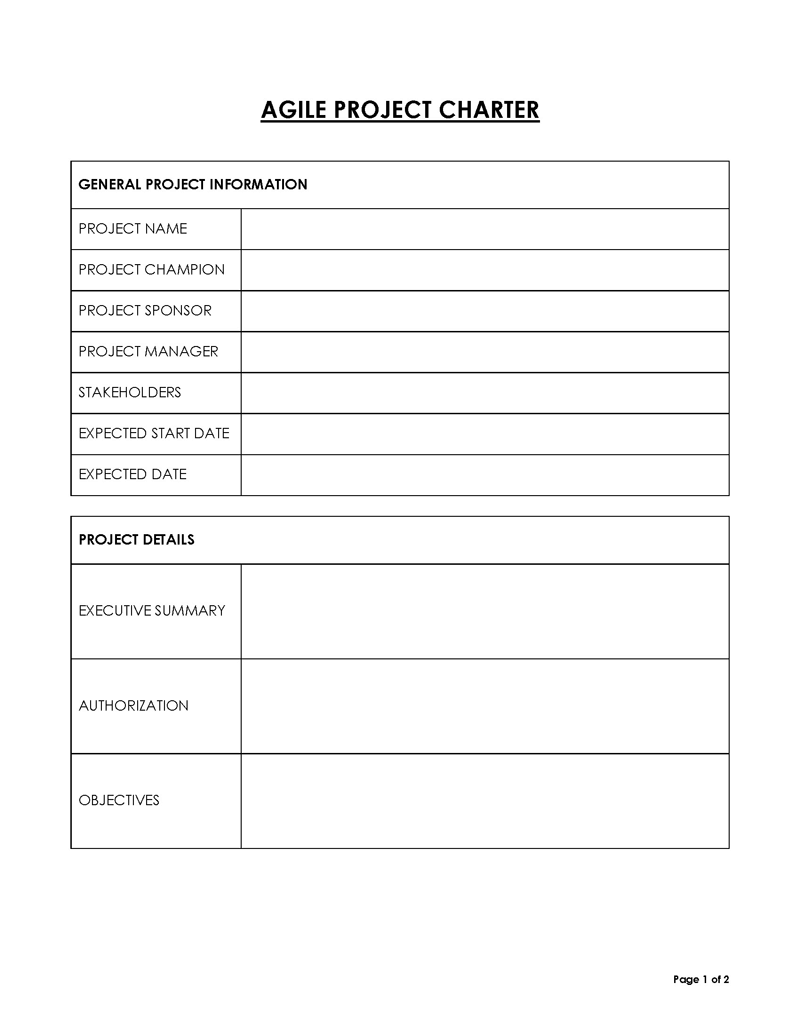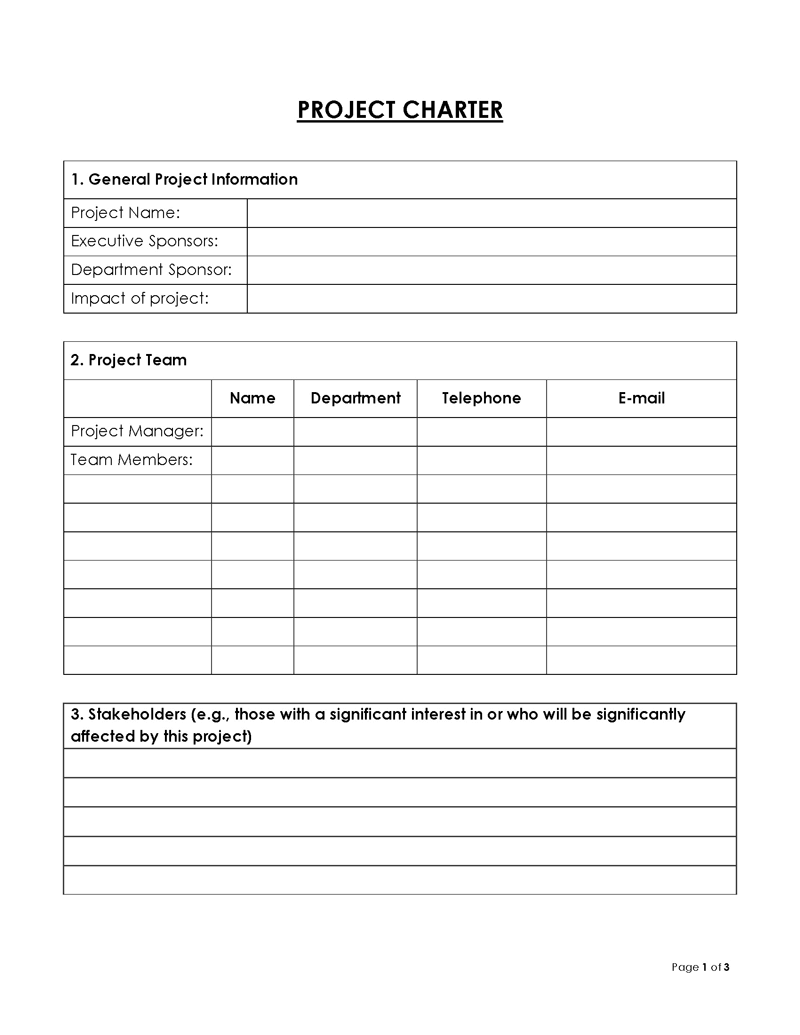Project charters are crucial documents that provide higher-level management with clear insights into any new project.
They help sell the project to sponsors and stakeholders, highlight its viability and potential return on investment and help you accept the approval. Therefore, they need to include all the relevant project details that will keep the management well-informed and enable the most important stakeholders to oversee critical tasks and processes.
Though creating a project charter may seem simple enough at first glance, it is easy to make mistakes and overlook critical elements it must have.
To keep your charters clean and error-free, read this thorough guide that will inform you on what project charters are, what they are not, which elements should be included, and what you can do to make them more effective.
Project Charter Templates
It can be overwhelming to create project charters and include all the relevant information without overlooking any element. Therefore, we’ve developed free downloadable templates for your convenience.
The project charter template is fully customizable to suit your changing needs. Fill in the blanks with the current project details, distribute the charter, and reuse the template whenever any new project comes along. These templates will keep your documents relevant, concise, and error-free.
What is a Project Charter?
A project charter is a short document prepared for the higher management. It details the scope and development plans of the project, the leading roles, responsibilities of the team members, key project goals and objectives, and how they will be achieved. Additionally, it identifies the project manager and their authority.
Project charters are used to authorize and formally announce the commencement of a new project.
As one of the main deliverables during the first stages of a project, a charter needs to contain critical information regarding the project’s purpose, its business benefits, and the necessary steps for its completion.
To that end, each charter needs to contain the following components:
- Problem statement
- Business case
- Goal statement
- Scope
- Timeline
- Team members
Some of the main reasons why teams need a clear project charter include:
- Project authorization – a project charter helps formally announce a new project and present its expected return on investment to the key stakeholders, allowing for more accessible project authorization
- Sales assistance – key stakeholders can use project charters as one of the primary sales documents, relying on them for decision-making processes and proper resource allocation
- Project tracking – charters are used from the start to the end of any given project, helping to track progress, make necessary changes, and stay in line with the main project goals
Properly designed project charters can help streamline communication between relevant team members, keep higher management well informed, and allow you to stay aligned with your project goals and objectives.
What a Project Charter is Not
Sometimes, it is easier to understand a project charter by determining what it is not:
Statement of work
Project charter and statement of work are commonly confused; however, they are highly disparate concepts. A statement of work is a brief overview of a project that explains what is and is not included in it and why a business might benefit from it.
It includes information on the project’s scope, main deliverables, project acceptance criteria, and more.
Once you have the statement of work, you will base your project charter on it and explain in more detail why a project is needed, who the key stakeholders are, how the project is to be conducted, and more.
Project plan
Whereas your project charter is based on your statement of work, your project plan is based on the project charter.
Together with the statement of work, your charter outlines the project scope, objectives, and responsibilities of team members. The plan then uses this information from the charter to provide additional details, including measurable goals and success metrics, important milestones, a complete timeline with a schedule, and budget plans.
Furthermore, it offers precise details on the scope of the project, its deliverables, and the communication plan while identifying key stakeholders and their roles.
Project brief
A project brief, as its name implies, is a concise document that outlines the main aspects of the project plan. In addition, it briefly explains why the project is needed and how it will be completed.
The main elements of the project brief include project background information, objectives and success metrics, target audience, and a timeline.
Business case
Finally, the business case may be the most similar document to the project charter– the difference lies in the scopes they cover. A business case is a detailed document that assesses a project’s principal risks and benefits, presents its expected costs, and offers alternatives (with a thorough explanation of why they’re inferior).
Most commonly, project charters are used for smaller-scale projects similar to projects a business has completed in the past. In contrast, business cases are used for new, large-scale projects that are unlike anything a business has encountered.
Why, What, and Who?
To create a comprehensive project charter, you need to answer three simple questions; why the project is essential, what it encompasses, and who the stakeholders are.
Why
Before you can start creating a comprehensive project charter, you need to answer the simple question “why.” Why is the charter helpful? Why does the business need it?
Charters have numerous applications, used to:
- Formally authorize new projects
- Announce the commencement of a project
- Create a shared understanding of what the project encompasses
- Identify goals and objectives
- Define success metrics
- Obtain the necessary budget and resources
Moreover, a charter helps notify stakeholders and project managers and is used as a reference throughout the project lifecycle.
Understanding the value of charters and why they are helpful to an organization helps create compelling documents that benefit team members, project leaders, key stakeholders, and the business.
What
The question “what” refers to the scope of the project. What is the project about? What does it encompass, and what is not included in the project? Most importantly, what is the budget for the project?
The answer to the question “what” can help create an effective sales pitch to the higher management that simplifies project approval and provides you with the necessary resources to complete the project.
Who
Finally, the “who” part refers to everyone included in the project. Who are the main stakeholders? Who are the sponsors, team members, and partners? Mention everyone who will be included in the project and state their roles and responsibilities.
What Does it Contain?
As a comprehensive formal document, the project charter needs to contain several pieces of vital information, including:
- The project purpose
- Main objectives
- Essential requirements of the project
- A brief project description
- Main risks involved
- Thorough timeline with exact start and end dates
- Key milestones
- A budget summary
- Approval details
- Primary stakeholders and their responsibilities
- Details on the project manager and sponsor, along with their authority levels
As always, keep your charter clean, brief, and concise. While you will need to include a lot of information, provide only the most relevant details using simple, easy-to-understand language.
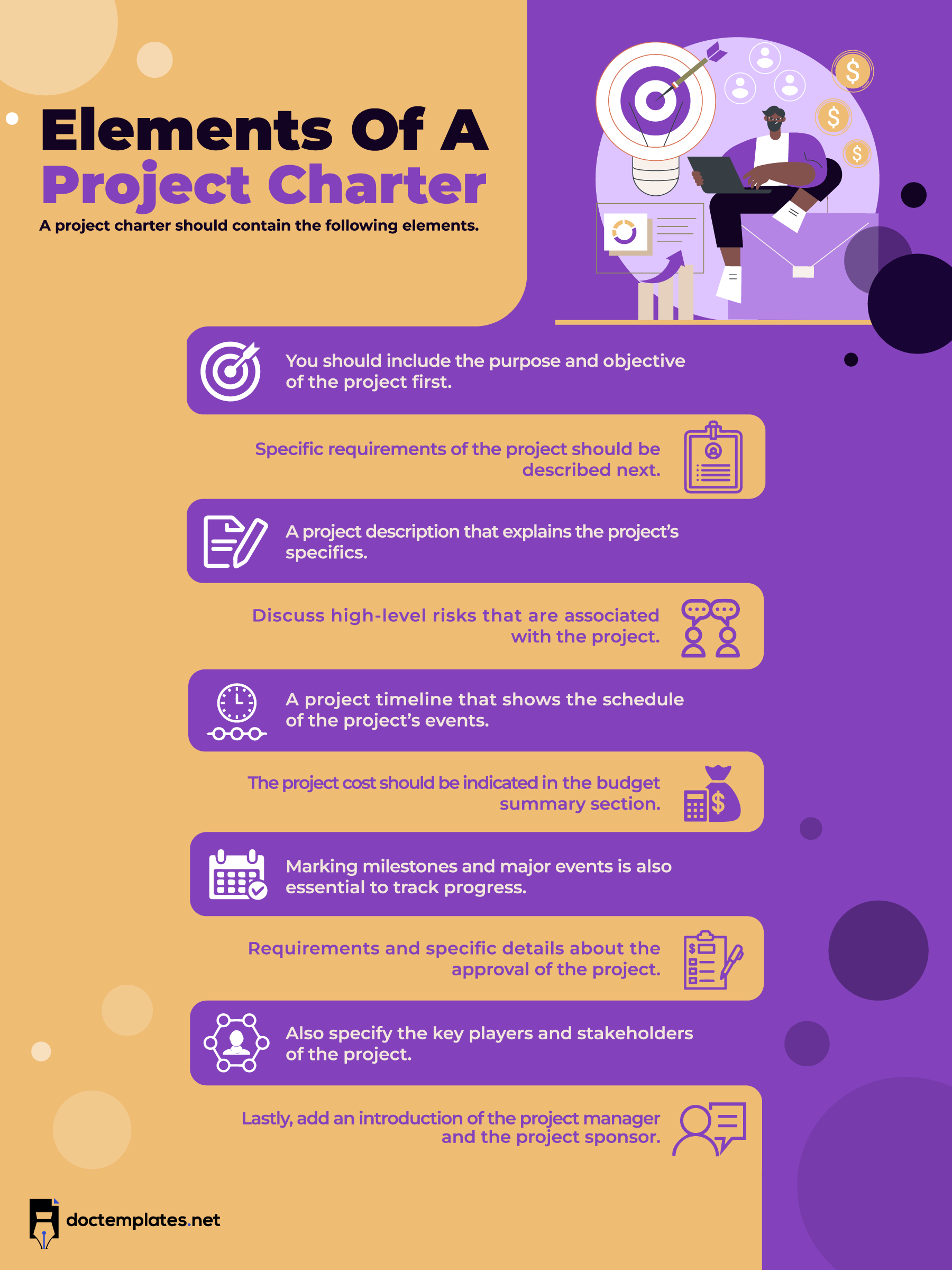
Sections of a Project Charter
Although every project is unique, project charters are standardized documents with clear, pre-defined sections and elements.
You will need to include the following sections in all your project charters, regardless of the projects’ scopes, objectives, budget requirements, and more:
Project information
The critical project information includes the project ID (if it has one), a concise project description, and information on the project manager and relevant sponsors.
Business needs, problems, and opportunities
You will need to address why the business needs the project you are proposing, the potential problems that could arise, and the opportunities the project would create. Briefly, in this part, you will need to explain the project’s purpose.
Project objectives and benefits
Project objectives and benefits help to obtain approval from higher management. Explain the main goals, how they help the business move forward, and the project’s expected outcomes. Remember to keep things concise and specific.
Project organization
The project organization includes details about the management and stakeholders. For example, you will need to identify all the individuals involved in the project, explain their roles, and state what they will do to guide the project to its completion.
High-level project scope
Next, it is time to clarify the project scope. State the entire scope of the project, include details on what is out of the scope and mention the most important deliverables.
High-level project timescale
Each project charter should contain a detailed timescale, specifying each stage’s start and end dates and a schedule of the main milestones. Of course, your timescale should be as accurate as possible. However, ensure that you have some flexibility for unexpected circumstances.
High-level project budget
The next step is including all the relevant budget requirements – provide a list of every minute expense you expect to incur for the project’s duration, stating precisely who has spending authority. Additionally, mention the expected rate of return to simplify the approval process.
Key assumptions
If any assumptions or constraints are relevant to your project, identify and mention them in your project charter. Then, explain the significant limitations and how you plan to handle them once the project is approved and set clear expectations for the stakeholders.
Key project risks
No project is without its risks, so you will need to carefully analyze the project, identify its main risks, and divulge them in your charter. Then, propose a thorough risk management plan and state which person on your team will be responsible for solving all issues that come your way.
Success criteria
Next, it is time to create a clear list of your success criteria. Then, present the vital measurable metrics you will use to determine the success of your project. Most commonly, the success criteria are based on the time, scope, and cost, though there could be differences between projects.
Communication plan
Finally, you will want to include a clear communication plan. State how you will keep the relevant team members updated on project progress, notify stakeholders about significant changes, and what channels you will use to stay in touch with everyone involved.
Tips for You
Even with the downloadable project charter template, you will still need to know how to create a comprehensive charter if you want to receive project approval.
The following tips will help you keep your charters brief and informative:
Be explicit
None of your stakeholders has time to waste, so you will want to represent the purpose of the charter as quickly as possible. Use precise language and be explicit – state precisely what the project is about and how it will develop.
Build it with your sponsor
Though it is always up to the project manager to develop a charter, you will find it much easier to build it with your sponsor. At the very least, have your sponsor review it before you send it for approval.
Keep it brief
You will need to divulge an abundance of information in your charter – however, it is in everyone’s best interest to keep it as brief as possible. You want to provide a detailed project overview, but do not provide excessive details on how every step in the project will transpire. Instead, use lists and bullet points to present all the relevant information quickly.
Easy-to-understand language
Avoid jargon and technical terminology – instead, use simple, easy-to-understand language. It will help you avoid misunderstandings and give your stakeholders clear expectations.
Discuss with stakeholders and team
Before developing your project charter, thoroughly discuss it with your team members, stakeholders, sponsors, clients, and others. Gather all the necessary information about the project to get a complete picture before you send your charter for approval.
Include specific information
Be very specific in what your project is about, how you will guide it to its completion, and how it will benefit your company. Simply stating “the project should increase revenue,” for instance, says nothing to the stakeholders. Instead, explain how it will increase revenue, what risks you will need to take to achieve such results, and how you will manage these risks. Again, being specific and relevant is vital.
Organize
Staying well organized will help you develop a comprehensive and compelling project charter. You can stay organized by defining:
- The customers – who will enjoy the project deliverables
- The stakeholders – who have a specific interest in the project and how they will be involved in it
- The roles – define which roles and responsibilities everyone involved in the project will have
- The structure – how will you organize the project, communicate with relevant team members, and report progress?
The better organized you are, the easier it will be to develop your charter and bring your project to fruition.
Implement
The next step is defining how you will implement the project. Start with an implementation plan – explain all the project stages, activities, schedules, and deadlines. Define the milestones and track them, state the main dependencies and how they will impact project progress, and address all the resources you will need for project completion, from the equipment and materials required to the budget, workforce, and more.
Review
Finally, review the project charter with your teammates, sponsors, and stakeholders. Ensure that all the information included is accurate and adequately explained.
Final Thoughts
While project charters can be time-consuming to create, they are essential documents that expedite project authorization and approval and provide a clear overview of what the project encompasses.
They enable you to create comprehensive project plans, track progress, measure success, and determine budget requirements.
Use our downloadable templates to create comprehensive charters and enjoy more excellent project approval rates.
